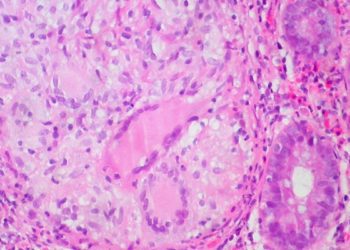Repeated head trauma in fighters linked to area-specific brain volume reductions and cognitive slowing
1. The number and frequency of fights for boxers were linked to reductions in brain volumes of the thalamus, caudate, putamen, hippocampus, and amygdala.
2. Cognitive processing speed was reduced in professional fighters with increased number of fights and diminished brain volumes.
Evidence Rating Level: 3 (Average)
Study Rundown: Repetitive head trauma is becoming more of a concern in the military and in professional sports, as many soldiers and athletes with head trauma history are developing complex neurodegenerative symptoms and deficits in cognition. Professional fighters, such as boxers and MMA athletes, routinely suffer blows to the head and thus are likely to be at higher risk for developing these deficits. This study attempts to correlate the relative amount of head trauma in boxers and MMA fighters with various domains of cognitive function and brain volume measurements as compared to controls matched for level of education. Boxers, who receive more head trauma during bouts than MMA fighters, had significantly lower volumes bilaterally in the thalamus, caudate, putamen, hippocampus, and amygdala than MMA fighters, but had varying statistical differences in unilateral brain volumes when compared to controls. Slight reductions in processing speed were also found to correlate with lower brain volumes and differences in processing speed were noticeable between the most amateur and seasoned fighters. No differences in brain volume were found between MMA fighters and controls, and no deficits in cognitive tasks assessing verbal, psychomotor, or reaction proficiencies were detected. The authors also defined a Fight Exposure Score, based on a measure of number and frequency of fights, which correlated well with degree of cognitive impairment and decrease in brain volumes
While these results are the baseline for a prospective cohort study, the many experimental and statistical oversights weaken the conclusions considerably. For example, no cognitive or brain volume measurements are accompanied by confidence intervals, and no statistical measures to assess effect size are given (i.e. F or T values). In a recent publication, this group’s power analysis predicted that 300 fighters and 50 controls would be necessary to detect their desired effect size, but this data set only includes 22 controls subjects, suggesting that the results are greatly underpowered. The recruitment of controls was from “settings where physical fitness is emphasized,” but no other considerations other than age and education were considered, such as level of fitness, socioeconomic status, etc. While the results are compelling, these issues and more make interpretation of these results difficult, as conclusions from this data set would be better supported by more rigorous statistics, adherence to power analyses, and better experimental design.
Click to read the study in the BMJ
Relevant Reading: Professional Fighters Brain Health Study: Rationale and Methods
In-Depth [cross-sectional study]: 93 boxers, 131 MMA fighters, and 22 controls (all male) aged 18-44 years, were recruited to the Professional Fighters’ Brain Health Study in which baseline measurements of brain volume and cognitive function were assessed and compared with fighting intensity. Brain volumes were measured via T1-weighted MRI, and a computer based program measured cognitive function in four domains. Boxers had statistically lower thalamic (7.0%), hippocampal (5.1%), putamen (4.5%), hippocampal (4.1%), and amygdala (5.7%) bilateral brain volumes than MMA fighters as well as controls. No brain region volume was statistically different between MMA fighters and controls. An average decrease in thalamic volume of ~0.3% per fight was noticed in boxers and MMA fighters. A 0.19% reduction in processing speed was found per fight, though no other cognitive domains, such as verbal memory and psychomotor skill, showed statistically significant differences.
More from this author: Helicobacter pylori infections may protect against multiple sclerosis in women; Childhood adversity linked to increased adult psychiatric medication use; Childhood exposure to Paracetamol not directly associated to increased asthma risk; Shift work impacts cognition, but likely not permanent; Second hand fine particulates dangerously elevated in smoking homes
Image: PD
©2015 2 Minute Medicine, Inc. All rights reserved. No works may be reproduced without expressed written consent from 2 Minute Medicine, Inc. No article should be construed as medical advice and is not intended as such by the authors, editors, staff or by 2 Minute Medicine, Inc.







